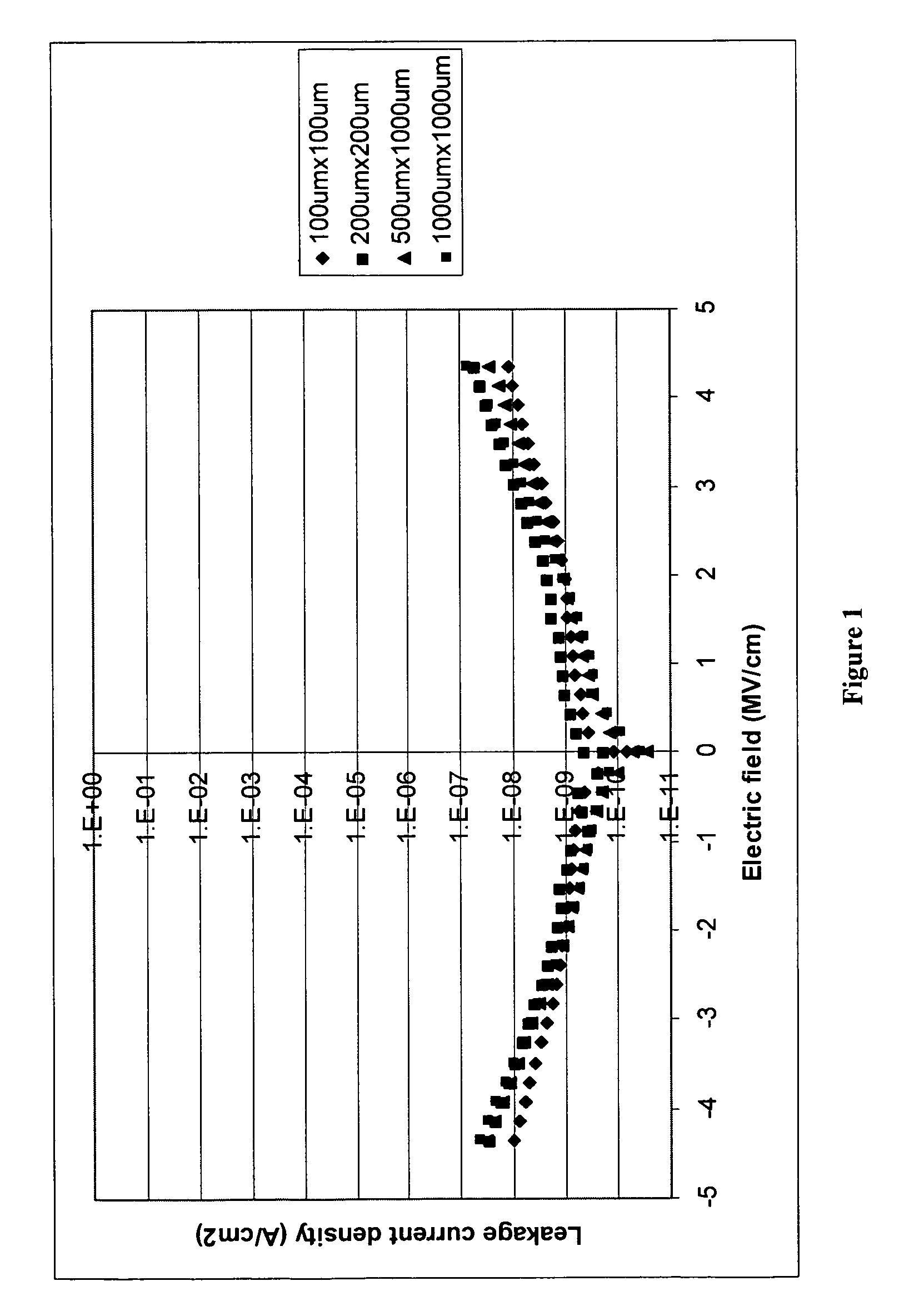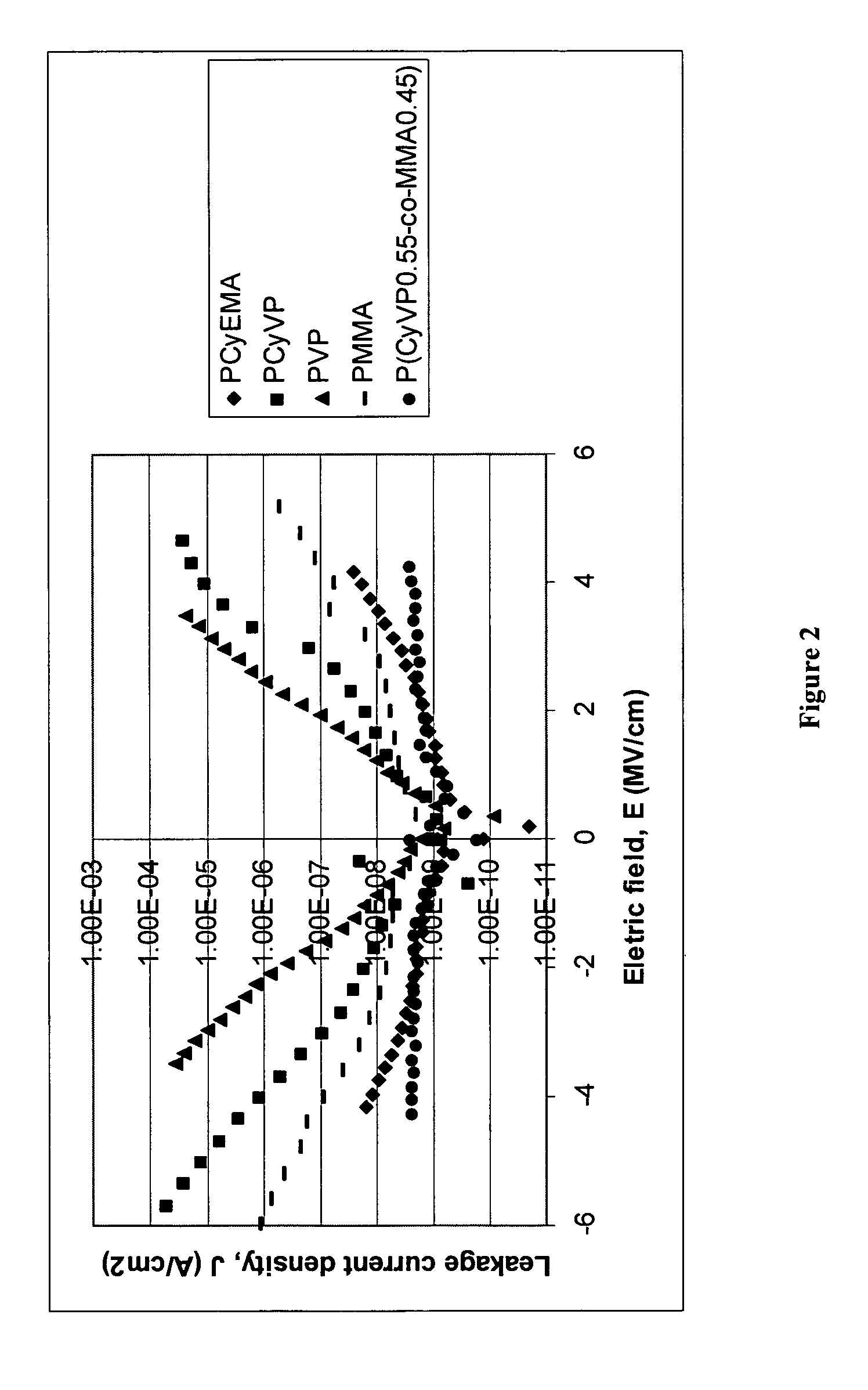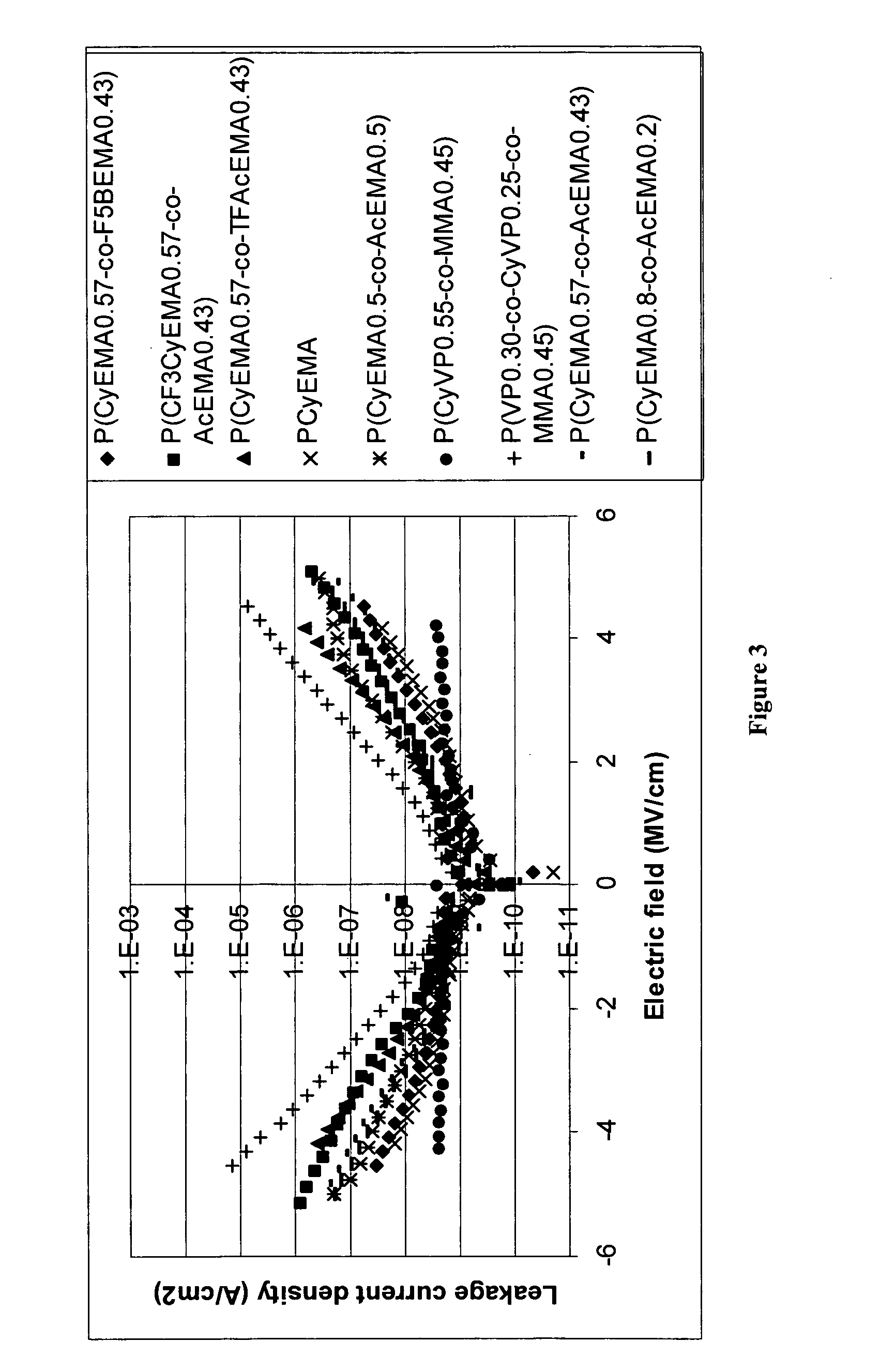Photopolymer-based dielectric materials and methods of preparation and use thereof
a technology of photopolymer and dielectric materials, applied in the field of photopolymer-based dielectric materials and methods of preparation and use thereof, can solve the problems of limited application in device fabrication, few polymeric dielectric materials are sufficiently soluble to be solution-processed, and the limitations of current-generation polymeric dielectric-based otfts
- Summary
- Abstract
- Description
- Claims
- Application Information
AI Technical Summary
Benefits of technology
Problems solved by technology
Method used
Image
Examples
example 1
Preparation of poly(vinylphenylcinnamate) (PCyVp)
[0134]Poly(vinylphenol) (2.0 g, Mw=20,000 g / mol) was dissolved in 20 mL of anhydrous tetrahydrofuran (THF), to which 5 mL of anhydrous triethylamine (excess) was added. The solution was placed in an ice bath for 10 minutes, followed by addition of a solution of cinnamoyl chloride (5.25 g, excess) in 5 mL of anhydrous THF. After stirring overnight, the reaction mixture was filtered and the polymer precipitates were purified by repetitive precipitation to yield about 2.5 g of poly(vinylphenylcinnamate) (PCyVP) as a white powder.
[0135]1H NMR (500 Mz, CDCl3): δ 6.58-7.81 (m, 1H, aromatic and allyl protons), 0.6-1.8 (m, 3H, alkyl protons).
example 2
Preparation of poly(cinnamoylethylmethacrylate) [P(CyEMA)]
[0136]Poly(hydroxyethyl methacrylate) (2.0 g, Mw=20,000 g / mol, hydroxyl group: 15.4 mmol) was dissolved in 20 mL of anhydrous pyridine. The solution was placed in an ice bath for 10 minutes, followed by addition of a solution of cinnamoyl chloride (6 g, 36 mmol) in 6 mL of anhydrous THF. The reaction was stirred at room temperature overnight, then precipitated in about 200 mL of cold methanol (MeOH). The polymer precipitates were purified by repetitive precipitation to yield about 2.5 g of poly(cinnamoylethylmethacrylate) [P(CyEMA)] as a white solid.
[0137]1H NMR (500 Mz, CDCl3): δ 7.65 (d, 1H, —CH═CH—), 7.51 (s, broad, 2H, aromatic), 7.33 (s, broad, 3H, aromatic), 6.45 (d, 1H, —CH═CH—), 4.09-4.28 (m, 4H, OCH2CH2O), 2.06 (s, sharp, 3H, OCH3), 1.84-0.96 (m, 5H, CCH3, —CH2—).
example 3
Preparation of random copolymer poly(vinylcinnamate-co-methylmethacrylate) [P(CtVP0.55-co-MMA0.45)]
[0138]Poly(vinylphenol-co-methyl methacrylate) (10.0 g, Mw=8,000 g / mol, hydroxyl group: 50 mmol, vinylphenol moiety molar ratio 55% based on calculation from proton NMR intergrations) was dissolved in 80 mL of anhydrous THF, to which 9.6 mL of anhydrous triethylamine was added. The solution was placed in an ice bath for 10 minutes, followed by addition of a solution of cinnamoyl chloride (10.95 g, 66 mmol) in 30 mL of anhydrous THF. The reaction was heated to 50° C. and stirred overnight, after which the reaction mixture was precipitated in 700 mL of cold MeOH. The precipitate was filtered, washed with MeOH, re-dissolved in 100 mL of THF, and precipitated again. After further precipitation (three times in total), over 11 g of random copolymer poly(vinylcinnamate-co-methylmethacrylate) [P(CyVP0.55-co-MMA0.45)] were obtained as a white powder.
[0139]1H NMR verified the copolymer ratio of ...
PUM
| Property | Measurement | Unit |
|---|---|---|
| leakage current densities | aaaaa | aaaaa |
| leakage current densities | aaaaa | aaaaa |
| leakage current densities | aaaaa | aaaaa |
Abstract
Description
Claims
Application Information
 Login to View More
Login to View More - R&D
- Intellectual Property
- Life Sciences
- Materials
- Tech Scout
- Unparalleled Data Quality
- Higher Quality Content
- 60% Fewer Hallucinations
Browse by: Latest US Patents, China's latest patents, Technical Efficacy Thesaurus, Application Domain, Technology Topic, Popular Technical Reports.
© 2025 PatSnap. All rights reserved.Legal|Privacy policy|Modern Slavery Act Transparency Statement|Sitemap|About US| Contact US: help@patsnap.com



